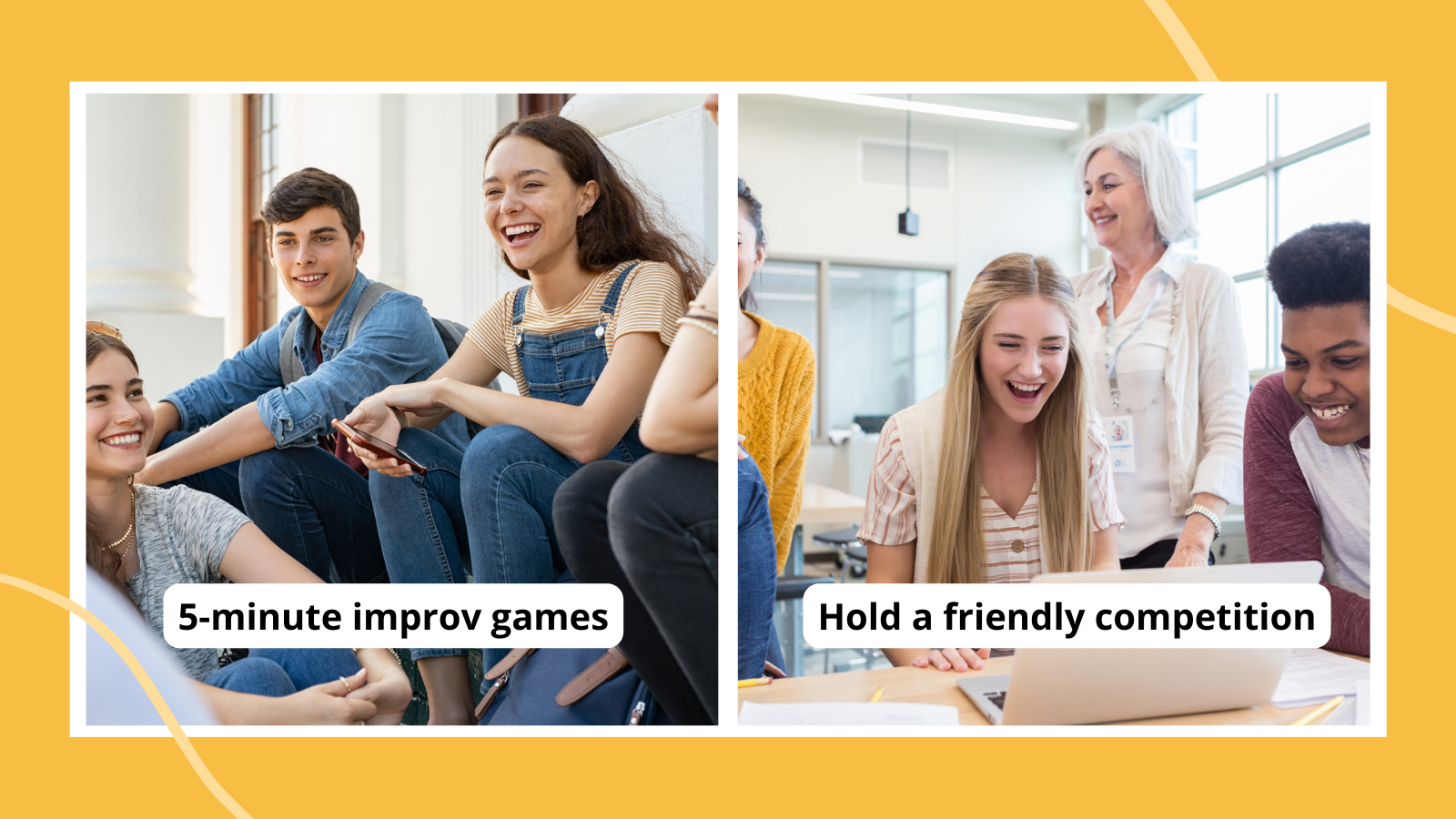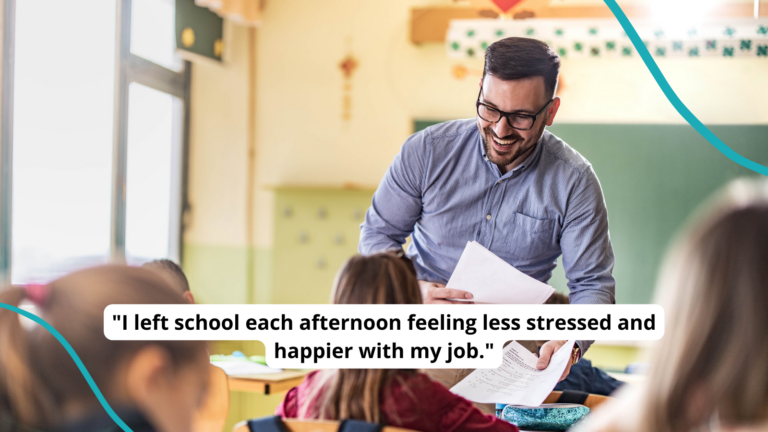Have you ever walked into your classroom to begin the period and as you step through the doorway, you can feel the energy is off? It’s almost like walking up to a group of people and realizing upon their instant silence that they were definitely talking about you.
Sometimes when the classroom vibe is off, you’re likely to blame yourself. If you’re like me, you may question what it is about you that has invited this uncomfortable energy in the room. Was it something I said? Is it because I’m wearing sandals?
Although it can be about me, what I’ve found is that it often has to do with the relationships in the room. And no, we’re not here to say that relationships are some kind of magic wand for every classroom issue. But when one or two classes just aren’t jibing like your others, it often comes down to student personalities, how they interact with one another, and their sense of community.
We know all teachers want to make sure that their classroom is one that feels safe and welcoming for all students. We also know teachers are weary of vague platitudes that don’t offer any real direction (e.g., “Just build relationships!”). With that in mind, I’ve put together five of my favorite, time-tested ideas for boosting morale when the classroom vibe is off. You can implement these as early as tomorrow!
1. Dollar store cookie rating and reviewing
Let me start by saying that I know that the last thing any teacher wants is another reason to spend any more of their own money on teaching, especially when so many teachers are struggling financially. However, I still think it’s worth sharing because it really did provide connection in my classroom.
I was looking for a way to bring my group together, and one thing I learned that they all loved was snacks. (Who doesn’t, right?) So, I decided I’d purchase a package of dollar store cookies and we’d eat them, review them, and rate them. I didn’t have an elaborate system or rubric created. It was as simple as let’s eat cookies, chat, and bond over our shared goal of finding the best store-bought cookie.
I bought one package per week for the last nine weeks of school. I did this during what would normally be a homeroom or intervention period so students were free to work on homework and get caught up on missing work.
Throughout this time, their engagement and interaction with one another definitely increased. They decided for the following year we’d like to make a March Madness–type bracket for cookies. Many students offered to bring in their favorite store-bought cookies. Some volunteered to organize bake-offs and to kindly review and anonymously score one another’s entries.
There are so many spin-off possibilities with this morale-booster. It got my students excited to come into class and gave them an opportunity to find common ground, even if that ground was iced oatmeal cookies (a 10/10 for me).
2. Rewriting the rules together
Having students give presentations in front of the class is not new or inventive in any way. However, I’d been trying all these modern approaches to our speaking and listening learning standards. My podcasting unit was great in theory. But it was so tech-forward they’d get lost in the production part, and then the content would suffer. So, with a class that was notably at odds with each other, I pivoted to another idea.
I decided instead to have them pitch a research topic to me and then do a presentation on it. They protested (loudly) and expressed their fears of getting in front of the class. I totally understood; I told them it’s the reason I had been avoiding it. But rather than ditching it, I had them rethink the norms as a class for audience behavior. What does a supportive and encouraging audience do? What does a supportive and encouraging audience avoid doing?
One of the norms we decided on was that each student had to ask one insightful question about another student’s presentation. The questions were so impressive, ones that proved they were invested. They complimented one another and applauded when every presenter was finished. Finally, they saw each other as allies and not as enemies. I felt the vibe shift in the room.
3. Five-minute improv games
I love improv and I’m not ashamed to say it. I seek out ways to bring levity to most situations because I think people need to laugh. From the wise words of Amy Poehler, “There is power in looking silly and not caring that you do.”
Acting out an entire fictional scene in front of the class is a tall order, even though it really does break down those barriers and gets people laughing. However, two of my students’ favorite improv games take less than five minutes:
- One-word story: One student says a word, the next students adds another word, and they go around the room to complete what ends up being a bonkers, marginally appropriate story.
- The Counting Game: I tell the class that we have to count from 1 to 25, and everyone has to participate. If more than one person says the same number at the same time, we have to start over.
They are super simple, but my classes end up requesting these games again and again. It gets them to look at their classmates, listen to their classmates, and all work toward one common, albeit silly, goal.
4. One-minute story time
You can do this one in a variety of ways. I started by telling my students a quick story about myself and then nominated a volunteer to tell a story of their choice the next day. This went on until everyone had told a story. Then, they surprised me by asking for more rounds. It took a minute or two at the start of class, and the more often they did it, the more comfortable they felt.
Another option is just to share one thing that the class doesn’t know about them or a cool fact (Reddit’s Today I Learned is good inspo) instead of a story. Even though this seems intimidating, they actually did learn about each other and find that this classroom was theirs and a safe place to share.
5. Friendly competition
Finding ways to compete against other classes or teams can be morale-boosting. I know that it also can be morale-busting so it’s a tricky one to execute. It requires student buy-in, but I think your enthusiasm can set the tone for the class.
Often schools will have canned-food drives or fundraiser competitions. But your friendly competition doesn’t have to be school-wide or official school business. Challenge the class next door to see who can donate more children’s books to the local library. Challenge the other classes in your department to an ultimate Frisbee tournament.
You don’t even have to compete with other classes. Set a goal for students to complete a longer-term goal: alphabetizing your classroom library, completing 100 origami challenges, writing a thank-you note to each staff member.
Don’t forget to celebrate! If you have a special afternoon before a break or an end-of-the-year activity, seek student input and then try to see if you can make it happen. Showing that you’re excited that they are on your team can really ignite something in them. Even if they don’t win the competition, strategizing and working together is the real victory.
How do you boost morale in an “off” class? Let us know in the comments!
Plus, for more articles like this, be sure to subscribe to our newsletters.


